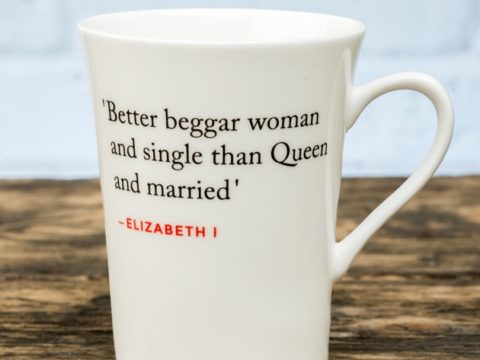Currents of History
by Dominic Pearce
Cornelius Johnson at the Weiss Gallery
At his London gallery (59 Jermyn Street, London SW1 6LX) Mark Weiss has been showing portraits by Cornelius Johnson, an artist from an immigrant family who was born in the last decade of the sixteenth century.[1] Mainly they are studies of members of gentry families, however senior courtiers also appear and a queen. There is an exquisite small painting of Henrietta Maria in an imagined classical palace of gigantic scale. As she wander through her infinite home the wife of Charles I strums a stringed instrument, a neoplatonic muse in silver
and red silk fringed with gold, and falling over her arms – but her hands are free to pluck the strings and fill the air with music – an impractical wrap of ocean-blue.
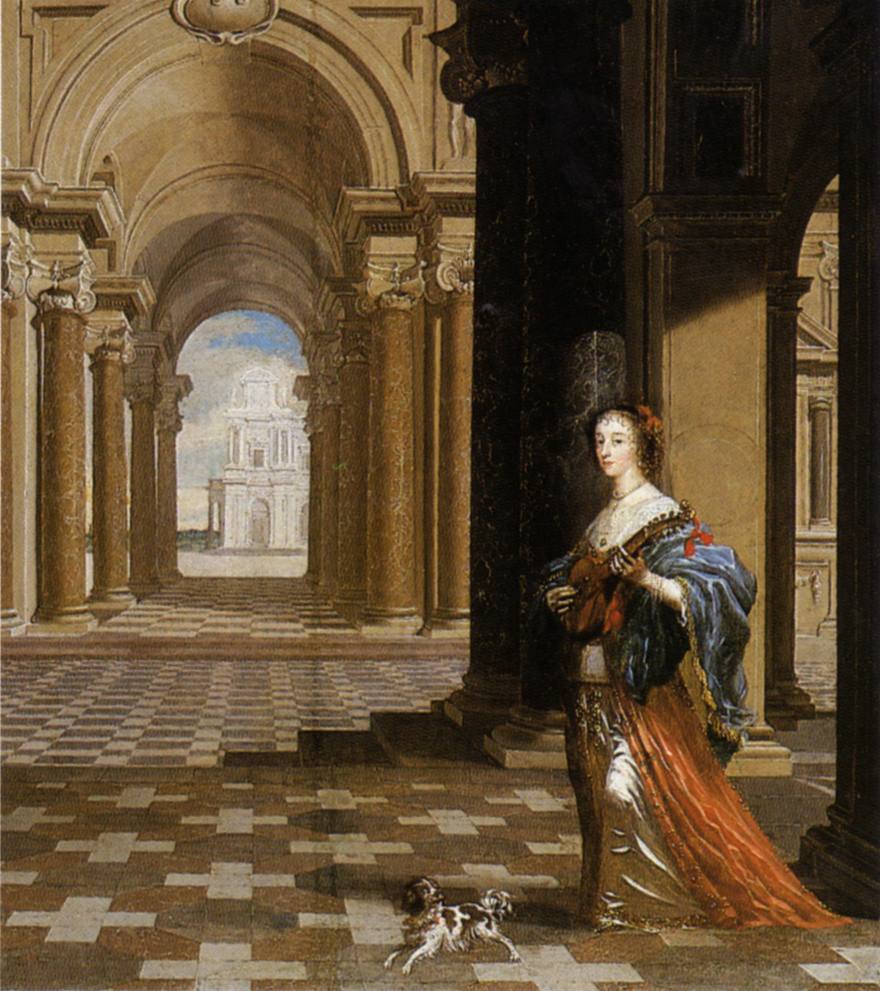
For readers of Tudor Times the interest of this exhibition, other than the quality of the pictures, other than their charm and clarity, indeed their superb and seductive technique, lies in a vision of the future. If you were a subject of the Tudors, look what was coming.
History is change but history is continuity too. In this show the politics of the sixteenth century can be seen just as much as those of the time they were painted. The Reformation age made religion political in a new way, since different versions of Christianity, and their interaction, supported – and created – new politics. The wars of the seventeenth century resulted.
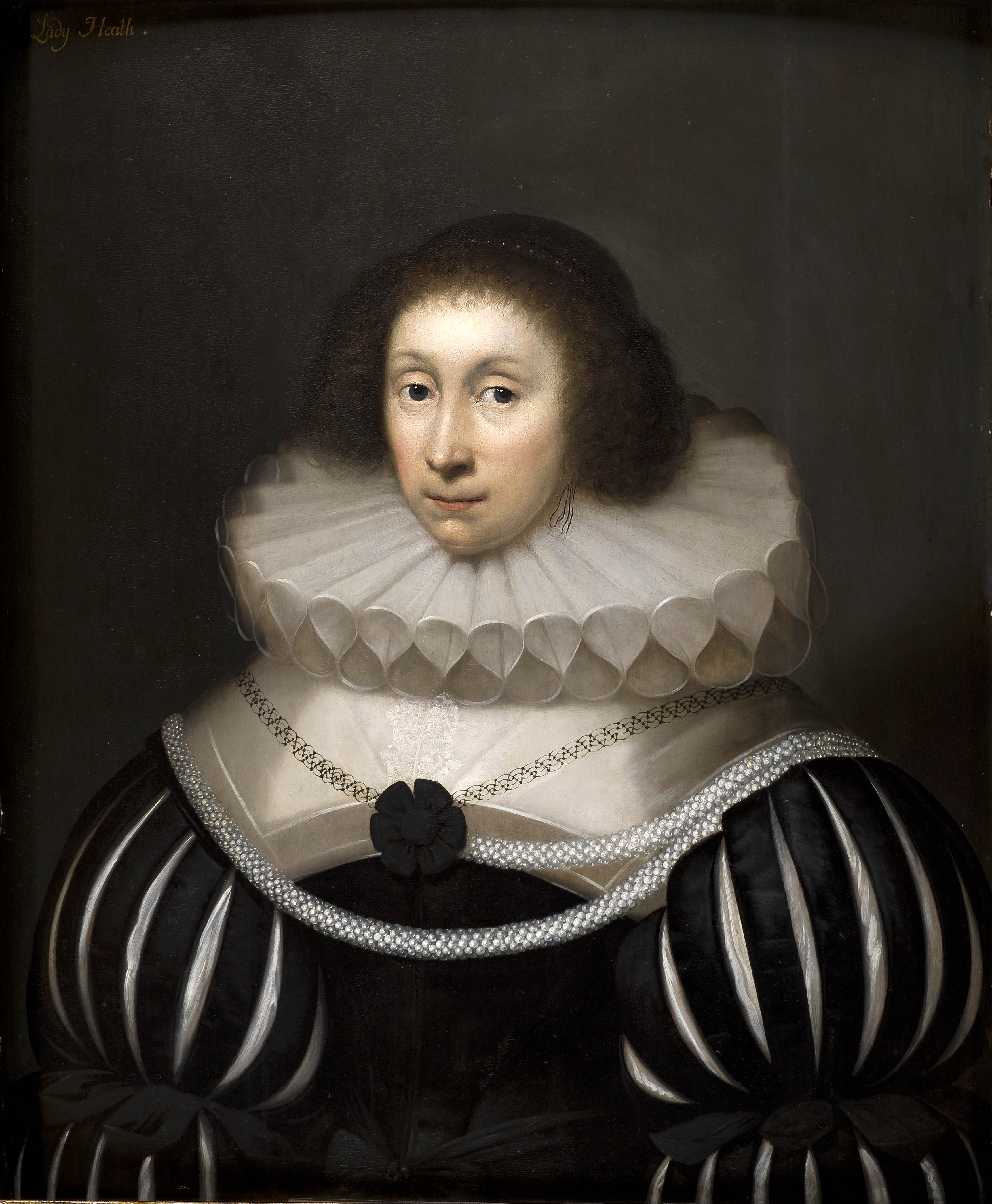
Many sitters wear black. Lady Heath for one wears the early modern version of a little black dress (essentially… a big black dress). Black was not the pauper’s choice. It was one of the most expensive colours in the early modern wardrobe, requiring a long process of dying and re-dying. Lady Heath, and her husband Sir Robert, also sub-fusc, are telling us how rich they are.[2] Incidentally black really meant black and white. Lady Heath wears a huge lace ruff, and her sleeves are slashed to reveal the white silk of the undergarment. If you want a master-class in painterly technique look at the way Johnson depicts lace, using a miniscule brush loaded with lead white paint. Galaxies of pearls are gathered into a thick rope festooning Margaret Heath’s shoulders, one end of which is fastened with a black flower (perhaps of stiffened, dyed cambric) just at the point of her (decently covered) cleavage.
When the portraits were painted, Sir Robert was about to be appointed Lord Chief Justice. As a civil war royalist he would be impeached by Parliament.
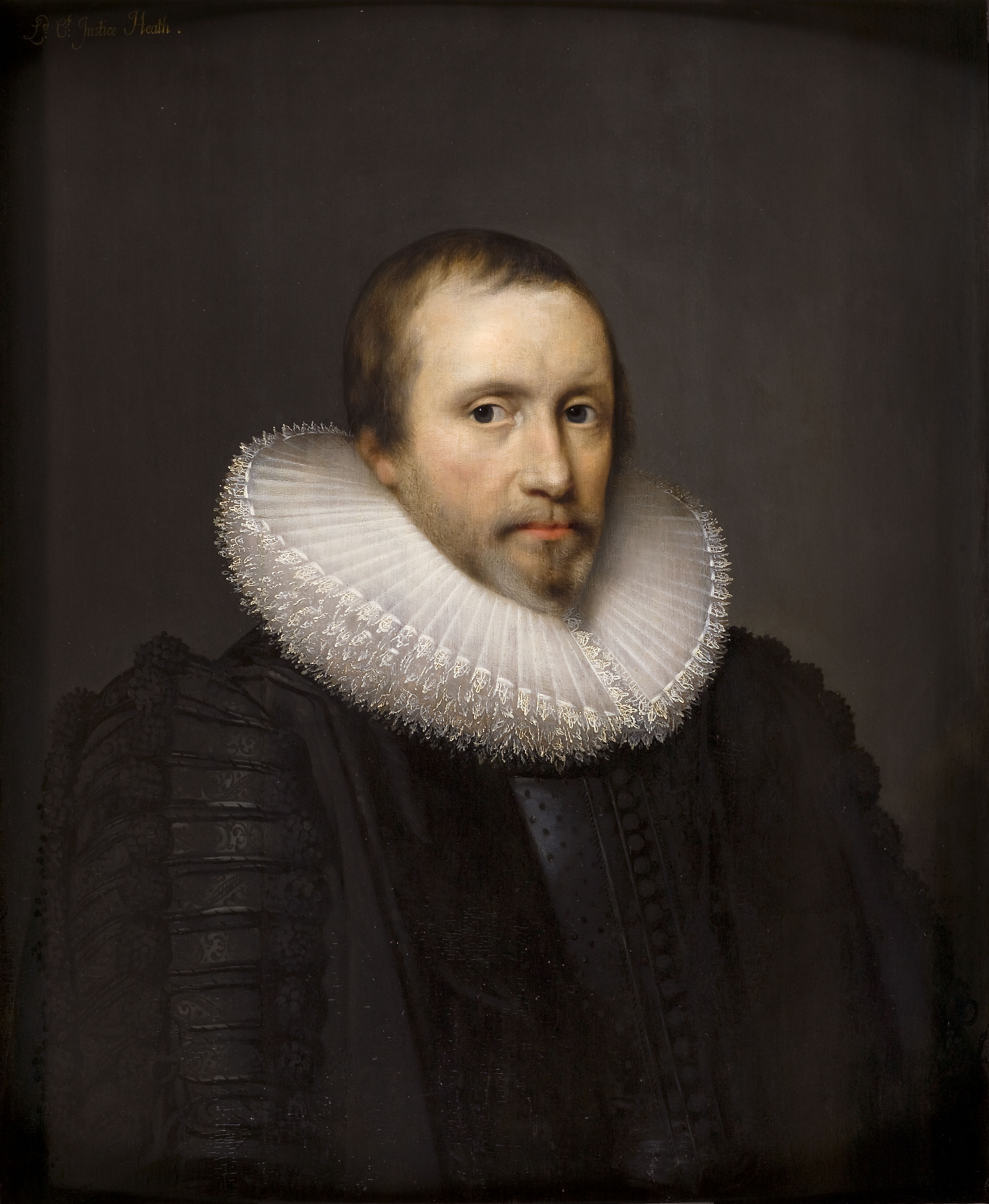
Thomas Coventry (two portraits) and his wife Elizabeth are also in black. Elizabeth’s outfit is a carbon copy with small variations of Margaret Heath’s. In short we are seeing a Protestant uniform, recognisable from the pictures of Rembrandt, an exact contemporary. Cornelius Johnson was Calvinist, part of the congregation of the Dutch church Austen Friars, where hewas baptised in 1593 and where in 1619 he attended the christening of his nephew Nicasius.[3]
The portrait of the physician John Bathurst, seated in a comfortable chair (also expensive), makes the point. This picture is dated 1637. On his desk the Book of the Apocalypse is open at chapter 22. This chapter promises the Second Coming of Jesus any time soon. That is what the more trenchant Puritans firmly expected – hence their hardness and hence their political certainty. What price salvation? Later Bathurst would be physician to Oliver Cromwell and his son Richard.
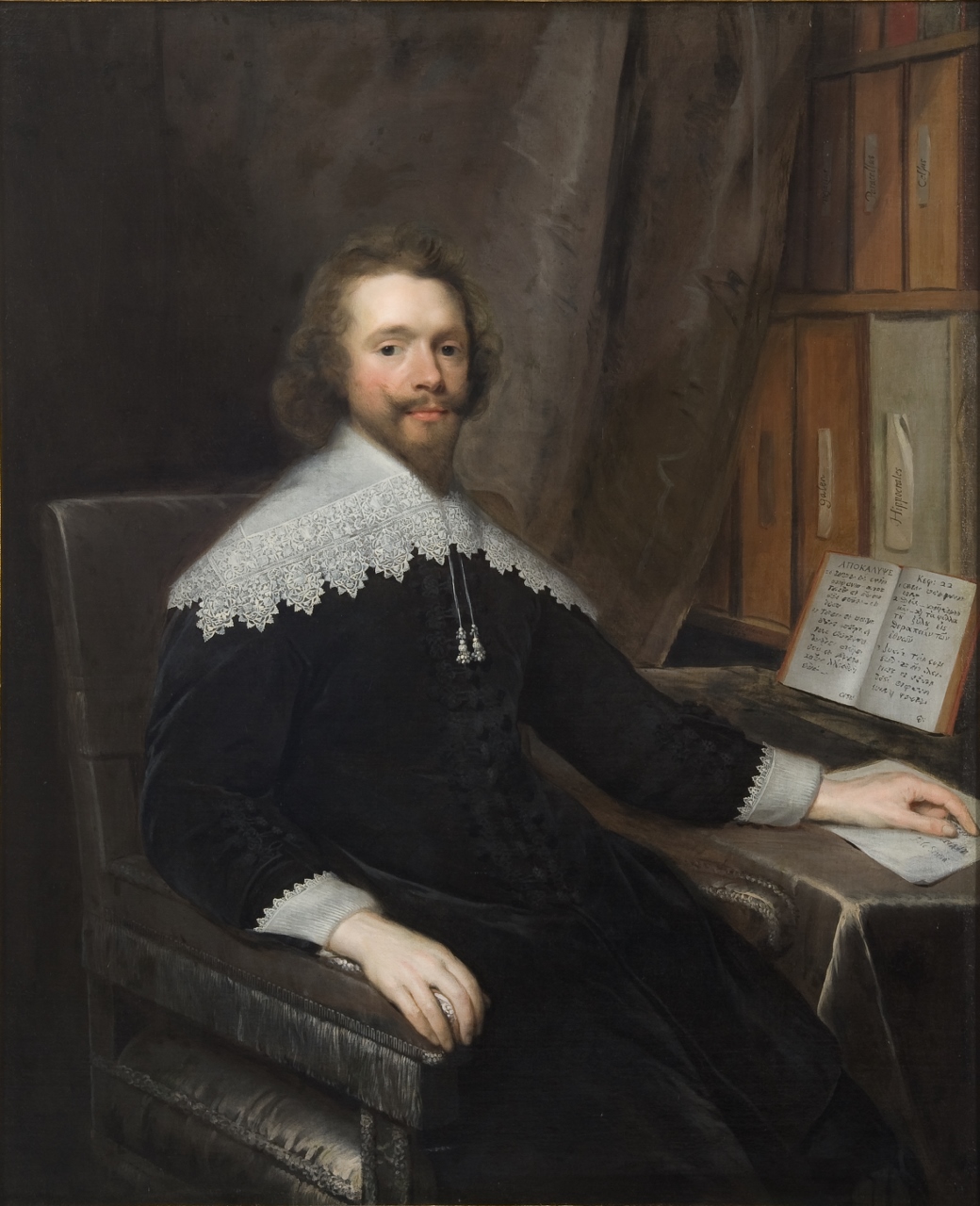
Cornelius Johnson came from a family of Dutch and German origins, and after the outbreak of civil war he left England to work on the continent. Another successful English court painter of the period was another Dutch Protestant Daniel Mytens (1590-1647) originally from Delft. Anthony van Dyck (1599-1641), who trumped them all as a royal iconographer, similarly came from the Netherlands, but he was Flemish. That is to say he was a Catholic from Antwerp, shaped by the Rubens whose works include poster images of the Counter Reformation (for instance the Descent from the Cross in Antwerp cathedral). We see the enrichment of English culture by an immigrant mix, but also the treacherous faith faultline that Elizabeth I skilfully negotiated. By contrast it was Charles I’s religious policy that led to the outbreak of the civil war in 1642.[4]
Coventry became Lord Keeper in 1625. To hold one of the great offices of State – Coventry was a member of the Privy Council until his death in 1640 – was the peak of wordly achievement. Of the sitters shown in the Weiss gallery, Coventry is therefore the most distinguished example of the coming man. He was not an aristocrat and he was not a bishop. He was the son of an Elizabethan lawyer descended from London merchants. Before the Tudors the great offices were held mainly by peers and bishops. This tradition could have been maintained but Henry VIII and his successors went for a wider meritocracy (partly because the loyalty of new men was more reliable). Obvious examples are Sir Thomas More, Thomas Cromwell, the Cecils. Coventry stands in this line.
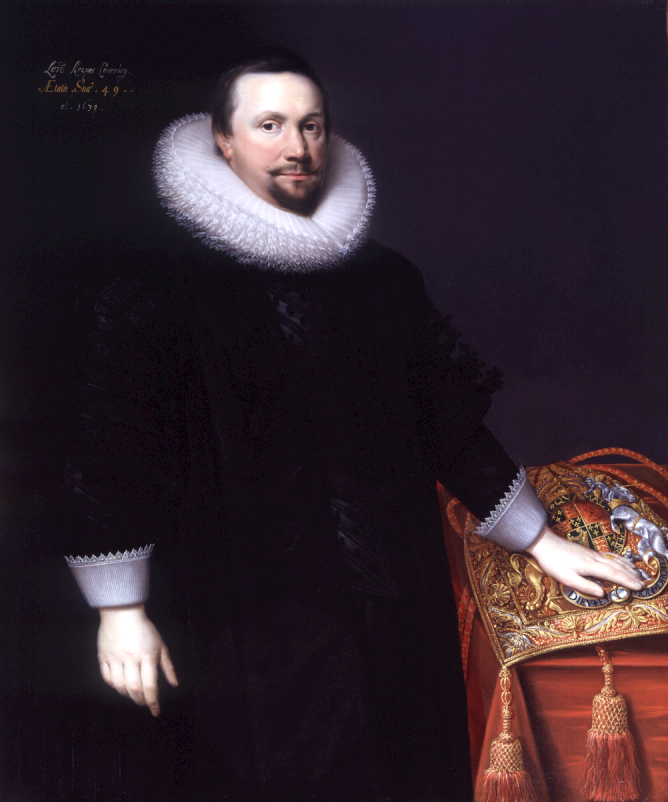
By contrast the most glamorous painting in the Weiss Gallery is a full length portrait of Frances Devereux, Countess of Hertford. Like a number of other paintings this comes from a private collection, in fact from Petworth House, where it usually hangs in the Egremonts’ private rooms. Realistically speaking, this is your only opportunity to see this highly accomplished image of a serious aristocrat.
Frances is not in black. Far from it. Her olive-green silk dress is covered with gold appliqué brocade and the high waist is decorated with a scarlet bow. The outfit is edged with wonderful lace over the décolletage and shoulder, and there are magnificent lace cuffs. She carries a fan just like a Spanish lady. This is not a Protestant statement, it is a leaf taken from van Dyck’s book.
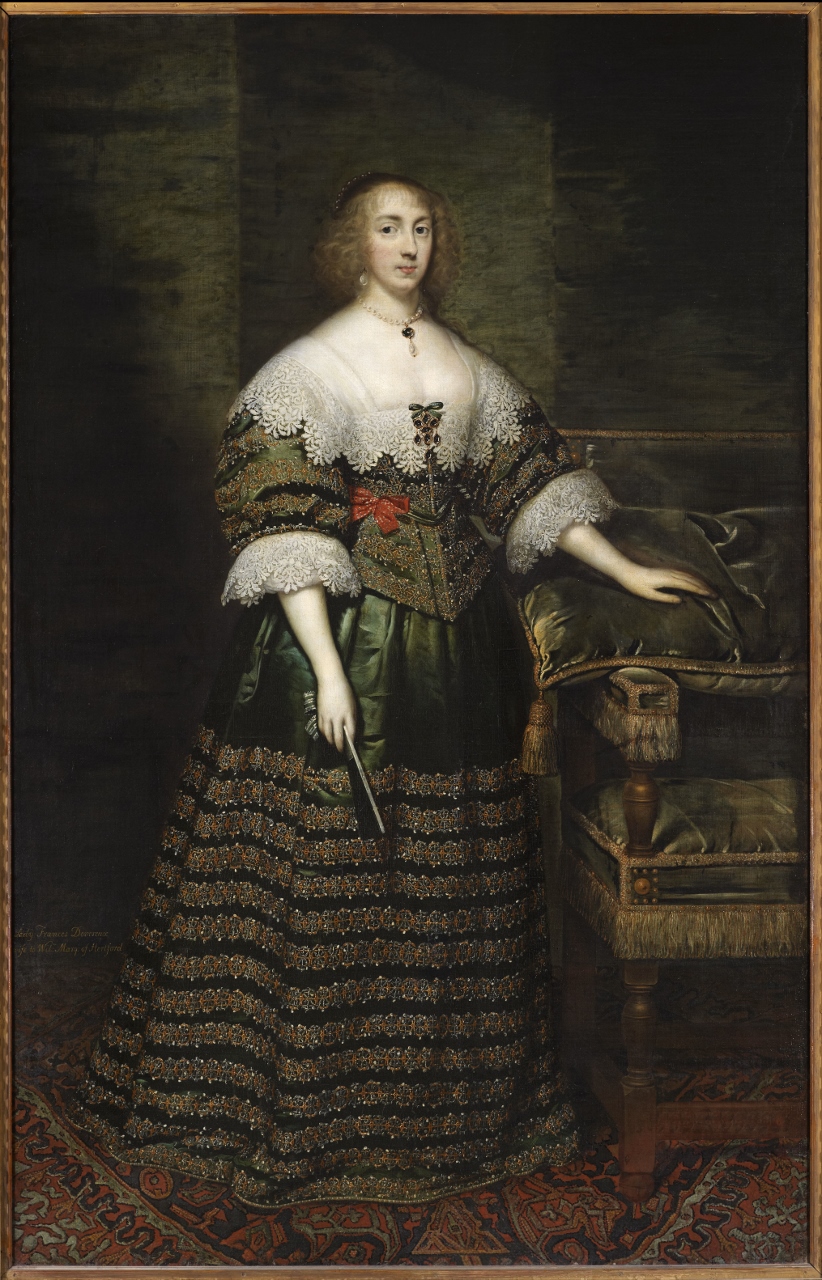
Nonetheless Frances is the most potent symbol of the Tudor age in this exhibition, since her maternal grandfather was Sir Francis Walsingham, and her father was Robert Devereux, Earl of Essex, the man executed for treason in 1601 after what could perhaps be called a tragic loss of mindfulness. Of course Essex’s children were affected by this appalling end, but in the early modern age the disgrace of a father was not always the destruction of the family, as the marriage of Frances shows.
She would live to be a duchess. Frances was the second wife of Edward Seymour, Earl of Hertford.[5] He was the grandson of Lady Catherine Grey, the sister of Lady Jane Grey. He was himself descended, therefore, from Henry VII, and distantly in line to the English throne. His great-grandfather on the Seymour side was Protector Somerset. After the Stuart Restoration of 1660 Edward was restored to his great-grandfather’s dukedom.[6] The Tudor roots of Frances were hardly less impressive. She descended from Mary Boleyn, the sister- in-law and girlfriend of Henry VIII.[7]
Perhaps I have implied that the Virgin Queen’s legacy was betrayed by the adventures of the Stuarts. Yet even the parsimonious Elizabeth I could not keep away from war altogether.
The last years of her reign were occupied with war in Ireland, known as the Nine Years War. Ireland consumed not only the father of Frances Devereux but also her grandfather. The first Devereux Earl of Essex died in Dublin in 1576 (of dysentery) after a failed attempt to carve out ‘a minor principality in Antrim.’[8] Twenty-three years later his son, the father of Frances, and the favourite of Elizabeth I, was charged with the command of the English army in Ireland against the Gaelic leader the Earl of Tyrone (Hugh O’Neill).
The second Earl of Essex commanded the largest English army to leave England under Elizabeth, but he did not lead it to victory. Rather than attack Tyrone in Ulster in the 1599 campaigning season, Essex was at first persuaded to relieve loyalist garrisons in Leinster and Munster. When he finally moved north there was no battle. Instead, in September Essex and Tyrone met personally on the banks of the River Lagan, Tyrone wading the river (on horseback). The leaders were in sight of their armies but unattended. The result was that nobody else knew quite what was agreed between them. A truce was however the result. It was not authorised by the Queen of England.
To save the situation Essex returned to England, something the Queen had forbidden without her explicit permission. He was gambling on surprise. If only he could see Elizabeth, she would forgive him and load him with favour. On 28 September 1599 Essex arrived at Nonsuch unannounced and unexpected. At once he went to find the Queen. Lytton Strachey wrote a superb account of what happened next.
‘He was muddy and disordered from his long journey, in rough clothes and riding boots; but he was utterly unaware of any of that as he burst open the door in front of him. And there, quite close to him, was Elizabeth among her ladies, in a dressing-gown, unpainted, without her wig, her grey hair hanging in whisps about her face, and her eyes starting from her head.’[9]
This episode in the end led to the earl’s disgrace, his weird attempt at a popular rebellion in London in 1601, to conviction of treason and execution on 25 February 1601. Of all the casualties of the Tudor period Essex seems to personify most theatrically the risks of high birth married to charisma. In addition, this was another death, like that of Mary, Queen of Scots, that Elizabeth shied away from. For her remaining two years she was sensitive to slights on her dead favourite’s memory, and did not show favour to those who had pursued him.
All these things in a small exhibition. You may miss the show which is not on for long. Nonetheless with the permission of the Weiss Gallery we have been able to include some of the lovely images. Keep an eye on their website (www.weissgallery.com). This is one of London’s leading dealers in Tudor and Stuart portraits. You may have an opportunity to see more treasures before long.
Dominic Pearce
July 2016
[1] Baptised 1593, died 1661
[2] It is possible the painter had a range of costumes available for his sitters, or indeed that he ‘painted in’ the costume but the message is the same.
[3] Karel Hearn, Oxford Dictionary of National Biography, Cornelius Johnson
[4] The underlying causes of the war were many, but its outbreak certainly resulted from the King’s religious policy in Scotland.
[5] His first was the potential royal pretender Arbella Stuart.
[6] For the Grey sisters, see Leanda de Lisle The Sisters who would be Queen (HarperCollins 2008).
[7] Mary was her great-great-grandmother. Frances’ grandmother, whose second husband was the Earl of Leicester, the first favourite of Elizabeth I, was therefore the queen’s cousin and also looked very much like her (and was hated by her).
[8] Paul E J Hammer, the Polarisation of Elizabethan Politics (CUP 1999) pp 17-18
[9] Lytton Strachey, Elizabeth & Essex OUP paperback 1981 p 134
